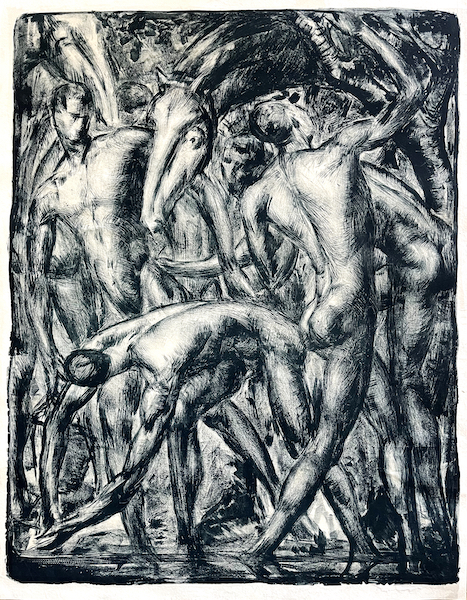Biography
Jenő Krón (Eugen Kron) worked as a graphic designer and lithographer. His masters at the Budapest College of Fine Arts between 1909-1913 and 1917-1918 were Tivadar Zemplényi and Viktor Olgyai. Between 1911 and 1913 he visited Nagybánya several times. His artistic career was determined by his graphical approach and the practice of a printing lithography from his early ages. Initially, he appeared in the exhibitions of the Hungarian Kunsthalle with traditional, realistic depictions of people. He remained faithful to lithography and etching techniques throughout his life.
In the 1910s, he was influenced by activism: he drew more and more monumental, powerful figures, and composed them with thick contours. His graphic series, made in the twenties, was made in faith in the power of action. The near-natural world of early graphics, permeated with light, was taken over by the painter’s new metaphysical approach in the late 1920s. Krón lived in Italy between 1928 and 1956, and from 1956 he worked in Budapest again. In 1935 he exhibited his etchings and lithographs at the National Salon. He published an etching album in 1912 and a lithography album in 1922. He also had several solo exhibitions in Kassa and Budapest. In 1972 he had a solo exhibition at the Hungarian National Gallery. His works can be found in the Hungarian public collection, among others in the Hungarian National Gallery and the Herman Ottó Museum in Miskolc. Several of his works are preserved in the Museum of Eastern Slovakia in Košice, the Civico Museum in Milan and the Corsini Museum in Rome.


